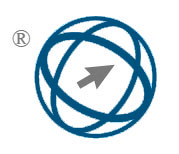Improving YOLOv8m with Neck-Integrated Atrous Spatial Pyramid Pooling for Enhanced Detection of Small Fish and Jellyfish
Abstract
The ocean depths are vital for biodiversity, as they host numerous marine species essential for maintaining ecosystem health. Accurate identification of aquatic creatures is critical for developing effective conservation strategies and sustainable marine resource management. However, aquatic environments pose distinct challenges, including light scattering, occlusions, and turbidity. This paper offers an improved YOLOv8m architecture that integrates ASPP module ( Atrous Spatial Pyramid Pooling) that enhances multi scale feature extraction. Our proposed model, YOLOv8m-ASPP, was evaluated against the baseline YOLOv8m on the Brackish dataset, which contains 8,417 annotated images across six marine categories (“crab, jellyfish, fish, shrimp, small_fish, and starfish”).
The key architectural innovation involves integrating the ASPP module, with dilation rates of [2, 4, 6], into YOLOv8m's neck, specifically after the SPPF layer. This placement allows the ASPP module to process rich contextual features from the backbone, improving the ability of the model to capture objects at various scales. The YOLOv8m-ASPP model achieved an overall mAP@50 of 0.991 (a +0.002 increase) and a mAP@50-95 of 0.832 (a +0.004 increase) compared to the baseline YOLOv8m's 0.989 mAP@50 and 0.828 mAP@50-95. The modified model showed a precision of 0.980 and recall of 0.979., operating at approximately 60 FPS. Performance notably improved for challenging classes: the 'jellyfish' class mAP@50-95 rose to 0.757 (from the baseline's 0.730). Furthermore, robustness in small object detection was evident, with the 'small_fish' class achieving 0.970 mAP@50 (up from the baseline's 0.960 mAP@50).
The findings demonstrate the effectiveness of the YOLOv8m-ASPP model for underwater ecological monitoring, successfully maintaining both detection accuracy and real-time processing capabilities. Future research could explore improved detection methods for small objects in environments with high turbidity.
Full Text:
PDFDOI: https://doi.org/10.31449/inf.v49i33.8656

This work is licensed under a Creative Commons Attribution 3.0 License.









